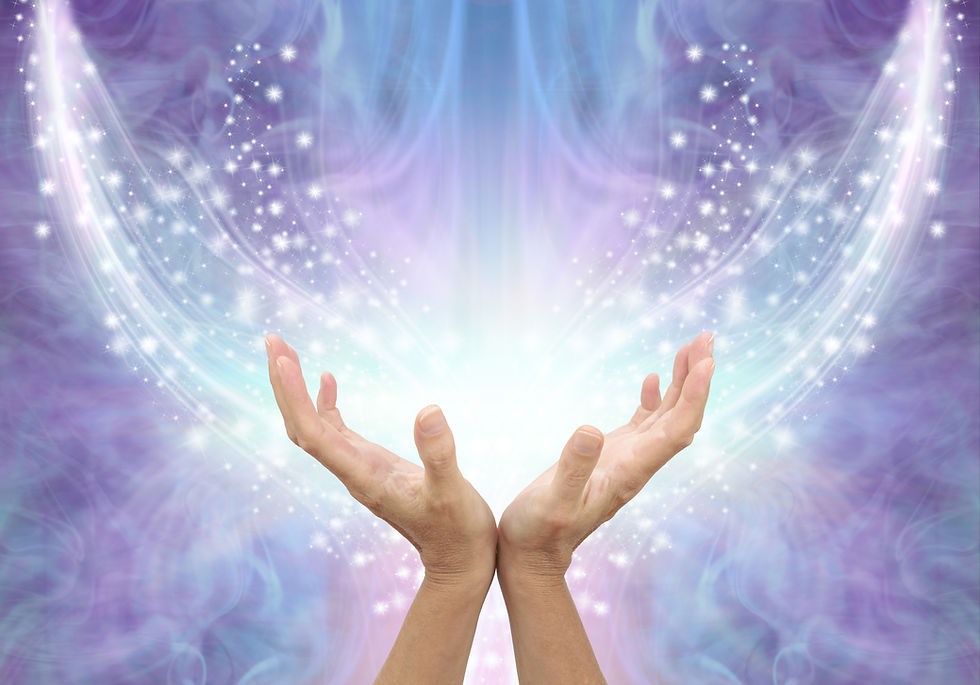Samhain Rituals – How to Celebrate Samhain
- Alessandra Cossu

- Oct 31, 2021
- 3 min read
Updated: May 6, 2024
Samhainis a time-honored tradition followed by witches, Wiccans, ancient druids, and countless other modern pagans across the world, celebrated as October turns to November. Samhain is a festival of the Dead, meaning “Summer’s End,” and though you’re probably tempted to pronounce it “sam-hane,” it’s actually pronounced saah-win or saah-ween.
What is a Samhain Celebration?
Tradition holds that Samhain is a celebration of the end of the harvest and the start of the coldest half of the year, and with this transition, it’s also celebrated as the beginning of the spiritual new year for practitioners, which is also why it’s nicknamed “The Witches’ New Year.”
How to Celebrate Samhain
Samhain is typically celebrated by preparing a dinner to celebrate the harvest. The holiday is meant to be shared with those who have passed on as well as those still with us. Set a place at the table for those in the spiritual plane, providing an offering for them upon every serving throughout the meal. In addition to those who have passed, invite friends and family to enjoy the feast with you. Typical beverages include mulled wine, cider, and mead, and are to be shared with the Dead throughout the meal.
Despite occurring at similar times and containing similar themes, Samhain and Halloween actually are not the same holiday. Halloween, short for All Hallow’s Eve, is celebrated on and around Oct. 31 and tends to be more family-focused. On the other hand, Samhain is more religious in focus, spiritually observed by practitioners.
There are some more light-hearted observances in honor of the dead through Samhain, but the underlying tone of Samhain is one of a serious religious practice rather than a light-hearted make-believe re-enactment. Today’s Pagan Samhain rites are benevolent, and although they are somber and centered on death, they do not involve human or animal sacrifices as some rumors may claim. Another difference between Samhain and
Halloween is that most Samhain rituals are held in private rather than in public.
If you want to start honoring this pagan tradition, you might wonder when to start. Well, the timing of contemporary Samhain celebrations varies according to spiritual tradition and geography. Practitioners state to celebrate Samhain over the course of several days and nights, and these extended observances usually include a series of solo rites as well as ceremonies, feasts, and gatherings with family, friends, and spiritual community.
In the northern hemisphere, many Pagans celebrate Samhain from sundown on October 31 through November 1. Others hold Samhain celebrations on the nearest weekend or on the Full or New Moon closest to this time. Some Pagans observe Samhain a bit later, or near November 6, to coincide more closely with the astronomical midpoint between Fall Equinox and Winter Solstice. Most Pagans in the southern hemisphere time their Samhain observances to coincide with the middle of their Autumn in late April and early May, rather than at the traditional European time of the holiday. In the end, it’s really up to you!
Samhain isn’t necessarily a creepy, morbid holiday obsessed with death, as some may conclude. Instead, it reaches for themes deeper than that, tying in with Nature’s rhythms. In many places, Samhain coincides with the end of the growing season. Vegetation dies back by killing frosts, and therefore, literally, death is in the air.
This contributes to the ancient notion that at Samhain, the veil is thin between the world of the living and the realm of the Dead and this facilitates contact and communication. For those who have lost loved ones in the past year, Samhain rituals can be an opportunity to bring closure to grieving and to further adjust to their being in the Otherworld by spiritually communing with them. However, it’s also a way to appreciate life, when you get right down to it.






Comments